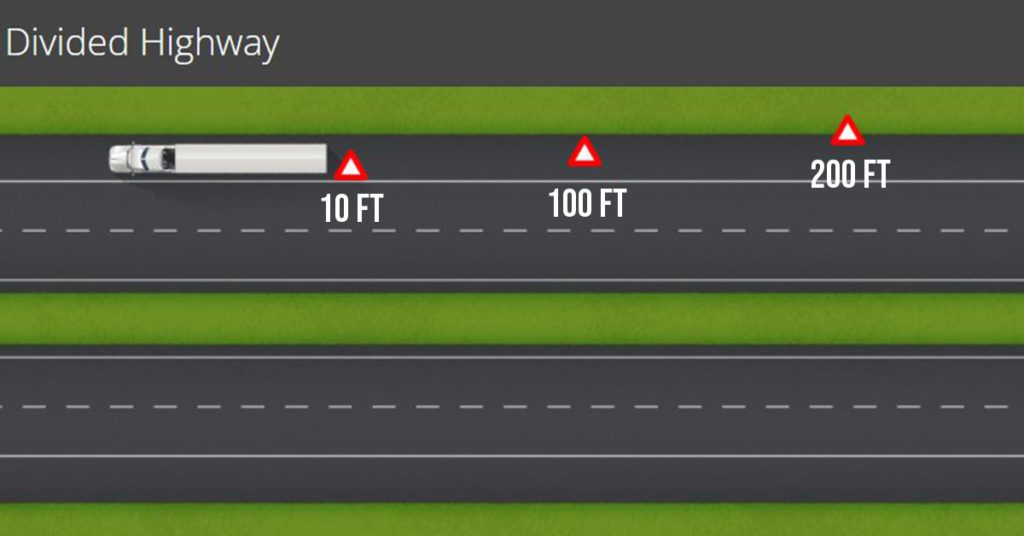You’ve just been involved in an accident or your truck has broken down. Stopping on a highway or roadside can be dangerous, especially if the road is winding, in a poorly lit area, or has poor visibility due to weather conditions. What do you do to keep yourself and others safe after an incident has occurred? Learning proper emergency triangle placement could not only save your life, but others around you as well.
Proper Emergency Triangle Placement on Different Road Types
Divided Highway
On a divided highway proper placement is as follows:
- One device 10-feet behind the truck
- The second device 100-feet behind the truck
- And the third device 200-feet behind the truck
Putting the emergency triangles in a straight line is fine; however, you want to make sure that you don’t offset them in such a way that it guides a vehicle into the back of your truck – if anything set them with the closest right behind your left tires, the next a little to the right and the furthest one a little more to the right, so they guide the approaching vehicles away from the truck almost like they were merging left.

Two-lane Road
On a two-lane road (one lane in each direction) the proper placement of triangles is:
- One device 100-feet in front of the truck
- The second device 10-feet behind the truck
- And the third device 100-feet behind the truck
By setting the triangles up in this way you can alert traffic coming from both directions of the issue up ahead.

Conclusion
Placing your warning devices should be one of the first things you do after you are safely off the road. Make sure to have triangles or flares in position within 10 minutes of pulling onto the side of the road. The first thing you should do is turn on your four-way flashers to alert traffic that your vehicle is not moving. By following these instructions on proper emergency triangle placement could save not only your life, but the lives of others on the road.
Read on to learn what equipment and accessories our professional drivers recommend you bring on the road to be successful.
More Like This
